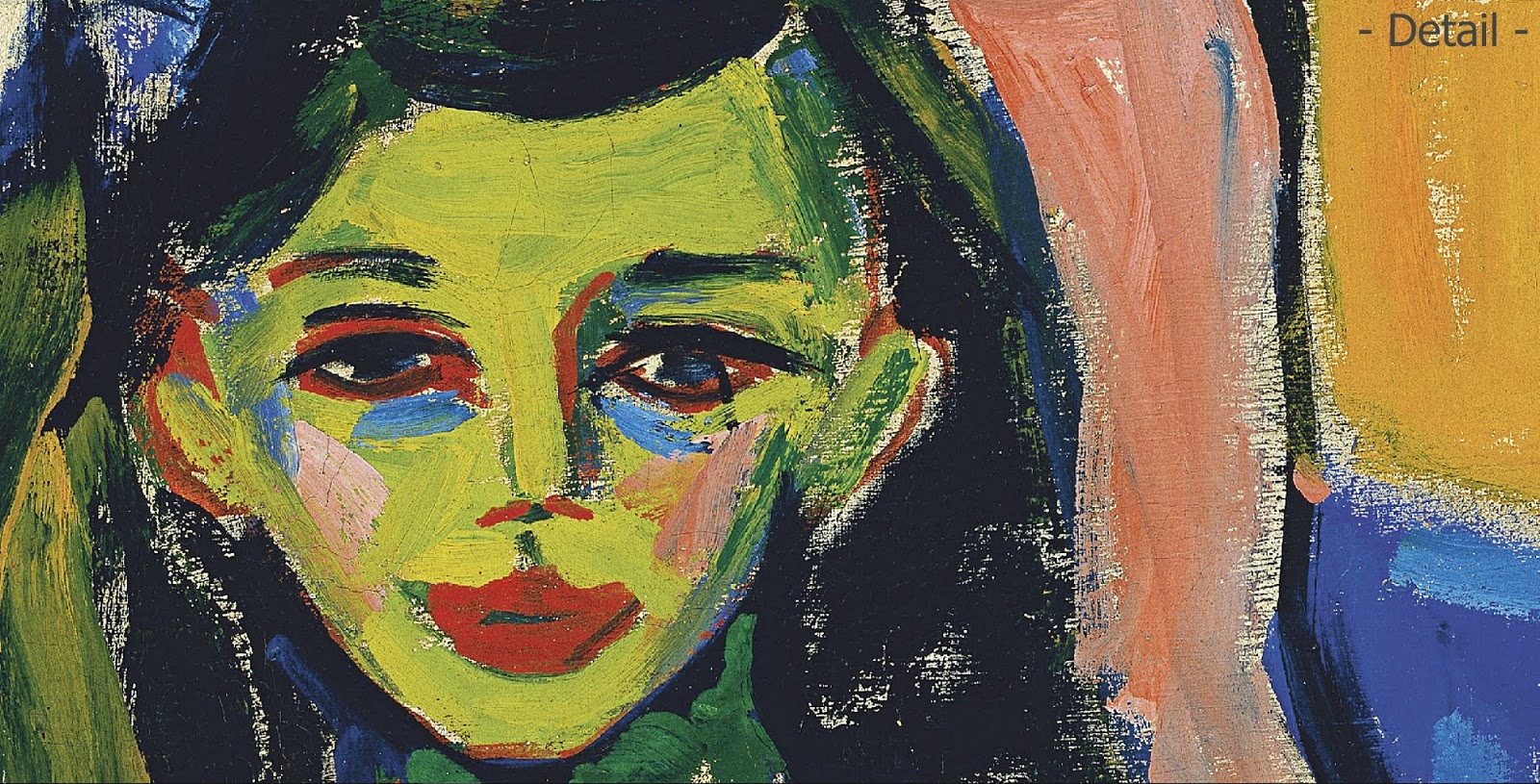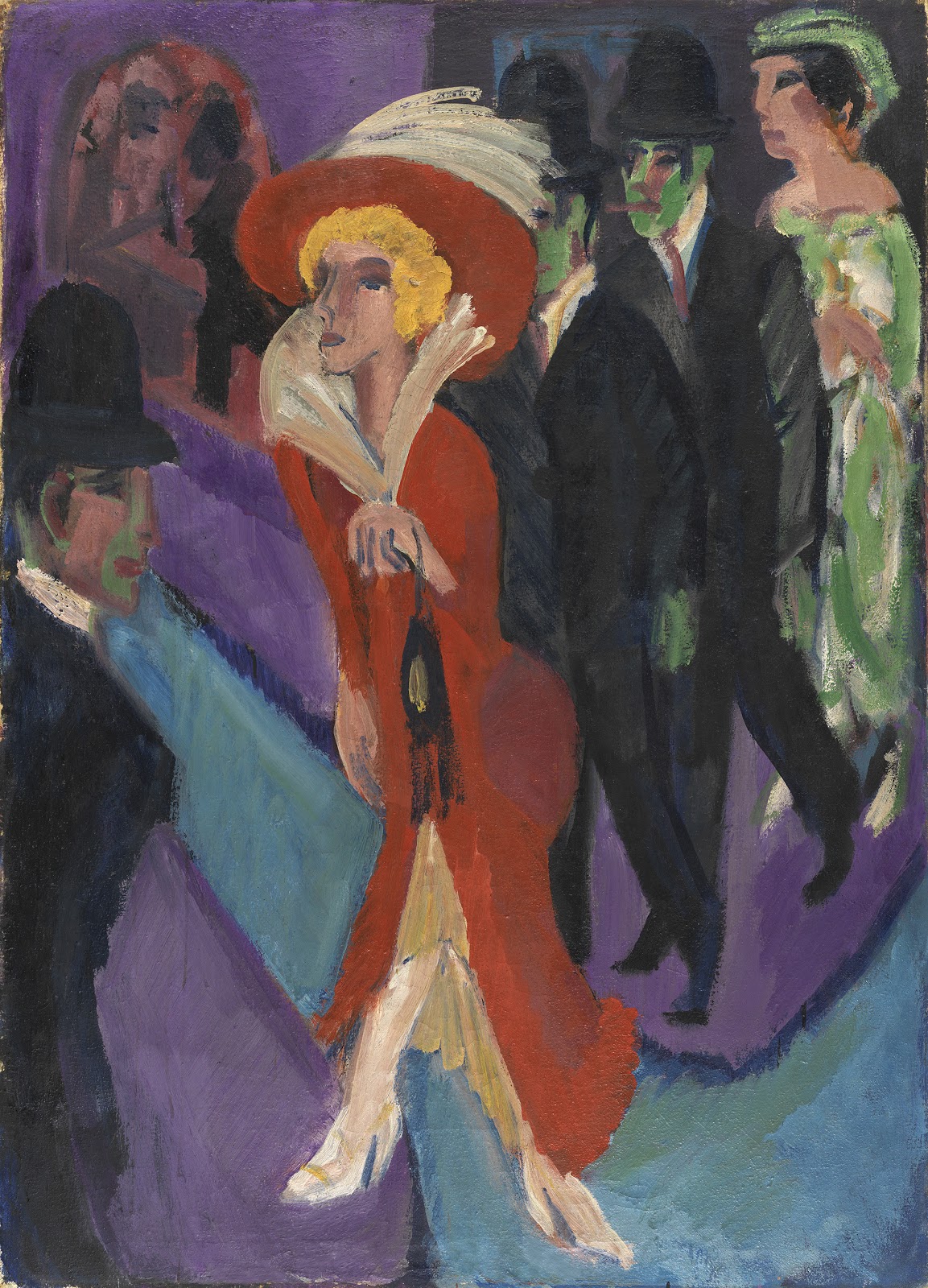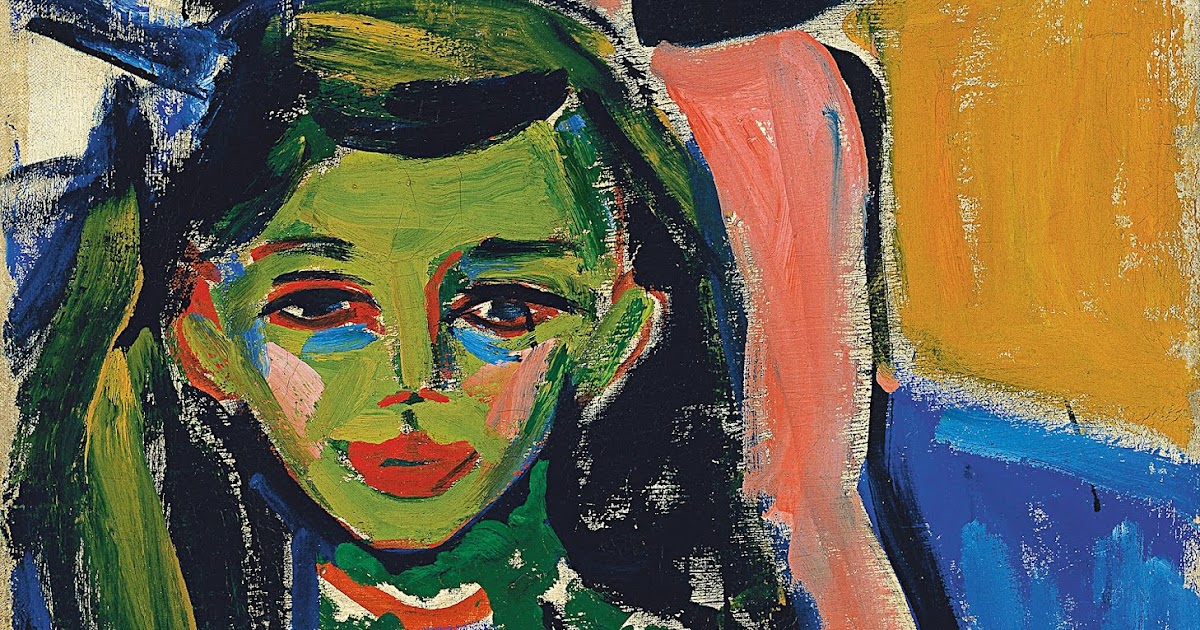
20th Century Expressionism, obraz, Franzi, Kirchner, ekspresjonizm, expressionism, oil, Ernst
Ernst Ludwig Kirchner [German Expressionist Painter and Sculptor, 1880-1938] Guide to pictures of works by Ernst Ludwig Kirchner in art museum sites and image archives worldwide.. (e.g. records of past sales at auction; sites providing examples of the artist's signature) Art Signature Dictionary NEW! Christie's Past Sale Archive (database.

Friedrichstrasse by Ernst Ludwig Kirchner Ernst ludwig kirchner, Expressionist art, German
/ E L Kirchner; stamped upper left reverse: NACHLASS E.L.KIRCHNER / Dre/Bf15 [Kirchner Estate seal; "Dre" = Dresden] Provenance. The artist [1880-1938]; his estate, Basel; (Galerie Roman Norbert Ketterer, Campione bei Lugano, Switzerland). Arnold A. [1916-2014] and Joan R. [1919-2019] Saltzman, Sands Point, New York; gift (partial and promised.

Franzi in front of Carved Chair by Ernst Ludwig Kirchner Obras De Arte, Arte Famosa, Arte
Ernst Ludwig Kirchner Street, Dresden 1908 (reworked 1919; dated on painting 1907) Not on view Street, Dresden is Kirchner's bold, discomfiting attempt to render the jarring experience of modern urban bustle. The scene radiates tension.

Enjoy some Damn Fine Art Ernst Ludwig Kirchner. Fränzi in front of a carved Chair ('Fränzi
Ernst Ludwig Kirchner, (born May 6, 1880, Aschaffenberg, Bavaria, Ger.—died June 15, 1938, near Davos, Switz.), German painter and printmaker who was one of the leaders of a group of Expressionist artists known as Die Brücke ("The Bridge"). His mature style was highly personal and notable for its psychological tension and eroticism.

Ernst Ludwig Kirchner piccola guida per conoscere l'artista
Inscribed 'E.L. Kirchner/08' bottom right and 'E.L. Kirchner 08/Badende. From 1909 to 1911, Kirchner and Heckel spent part of each summer at the Moritzburg lakes near Dresden, accompanied by various female friends and models. In 1910 they were also joined by Pechstein. Nude bathing and a relaxed, communal lifestyle provided the subject.
.jpg?maxwidth=3030&maxheight=1950)
ERNST LUDWIG KIRCHNER (18801938)
Ernst Ludwig Kirchner was a driving force in the Die Brücke group that flourished in Dresden and Berlin before World War I, and he has come to be seen as one of the most talented and influential of Germany's Expressionists.

Notes on Introduction to Architecture Ernst ludwig kirchner, Portrait painting, Expressionist art
Ernst Ludwig Kirchner, a founding member of Die Brücke, would render the world around him directly and authentically until he committed suicide in 1938 following the confiscation, derision, and destruction of many of his works at the hands of the German National Socialist Party.

View from the Window Ernst Ludwig Kirchner Ernst ludwig kirchner, Obras de arte
Ernst Ludwig Kirchner (6 May 1880 - 15 June 1938) was a German expressionist painter and printmaker and one of the founders of the artists group Die Brücke or "The Bridge", a key group leading to the foundation of Expressionism in 20th-century art.

20th Century Expressionism expressionism Ernst Ludwig Kirchner Oil Painting portrait Abstract
Ernst Ludwig Kirchner was born in Aschaffenburg, Germany in 1880. After studying architecture in Dresden he and his friends Fritz Bleyl, Erich Heckel and Karl Schmidt-Rottluff founded the 'Brücke' artists' group. In 1911 Kirchner moved to Berlin, and in the following years he reached a first high point of his career with powerfully expressive work.

Ernst Ludwig Kirchner (18801938) Expressionist painter Tutt'Art Pittura • Scultura
Ernst Ludwig Kirchner (6 May 1880 - 15 June 1938) was a German expressionist painter and printmaker and one of the founders of the artists group Die Brücke or "The Bridge", a key group leading to the foundation of Expressionism in 20th-century art.

L'Espressionismo di Kirchner in una grande mostra a Cecina ArtsLife
Details Ernst Ludwig Kirchner (1880-1938) Bildnis des Dichters Frank signed 'E.L.Kirchner.' (lower right) oil on canvas 27 3/4 x 23 7/8 in. (70.4 x 60.5 cm.) Painted in Kreuzlingen, Switzerland in 1917 Provenance The artist's estate. Kunstmuseum, Basel, by 1946. Galerie Roman Norbert Ketterer, Stuttgart, by 1954.

Franzi In Front of a Carved Hair By Ernst Ludwig Kirchner Famous Art Handmade Oil Painting
MoMA | The Collection | Ernst Ludwig Kirchner (German, 1880-1938) Ernst Ludwig Kirchner German, 1880-1938 Starr Figura, German Expressionism: The Graphic Impulse, New York, The Museum of Modern Art, 2011 Painter, printmaker, sculptor.

Ritratto Erna Schilling, Ernst Ludwig Kirchner, 1913,, olio su tela, Neue Nationalgalerie
Self-Portrait as a Soldier, or Selbstbildnis als Soldat, is an Expressionist oil-on-canvas painting by the German artist Ernst Ludwig Kirchner. Kirchner created this self-depiction in 1915, following his medical discharge from military service during the First World War. [1]

Enjoy some Damn Fine Art Ernst Ludwig Kirchner. Fränzi in front of a carved Chair ('Fränzi
The project's gestation was unusually long. Kirchner had moved from Dresden to Berlin in 1911, a year after Heym began giving public readings of his work at the Expressionist literary salon Der neue Club, where members of Die Brücke, the artists' group cofounded by Kirchner in 1905, were regular visitors. Heym had attained wide readership among the Berlin cognoscenti for his vivid and.

Erna with japanese umbrella Ernst Ludwig Kirchner , 1913. Expressionismo, Expressionismo
In 1905, painter and printmaker Ernst Ludwig Kirchner, along with Fritz Bleyl, Erich Heckel, and Karl Schmidt-Rottluff —all untrained in the visual arts—founded the artists' group Die Brücke, or "The Bridge," a moment that is now considered the birth of German Expressionism.

"E.L.Kirchner, Straßenbahn in Dresden" Bild als Poster und Kunstdruck von klassik art bestellen
Ernst Ludwig Kirchner (German, 1880-1938), is widely acclaimed as a master of German Expressionist Printmaking. One of the most important artists of German Expressionism, Kirchner was a founding member of Die Brucke in 1905 (along with Erich Heckel, Karl Schmidt-Rottluff, and Fritz Bleyl; they were soon joined by Emile Nolde and max Pechstein) and its dominant member for the next five or six.